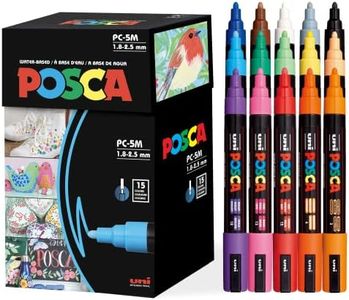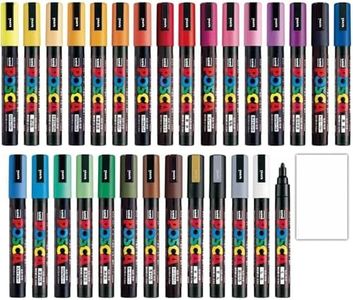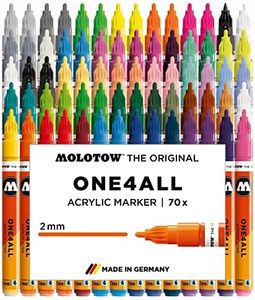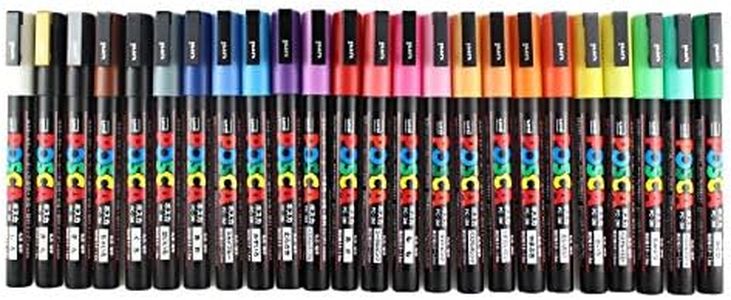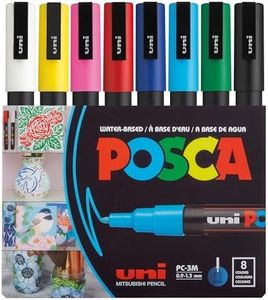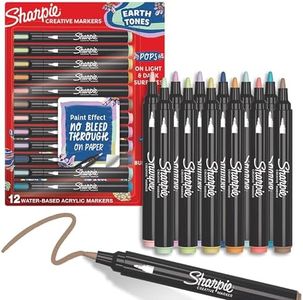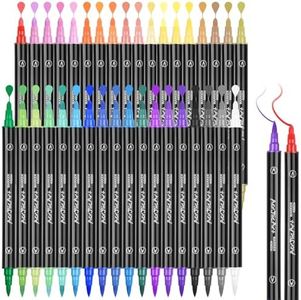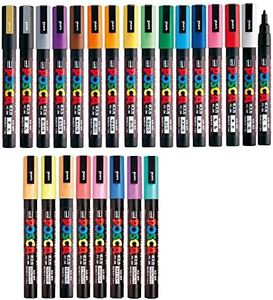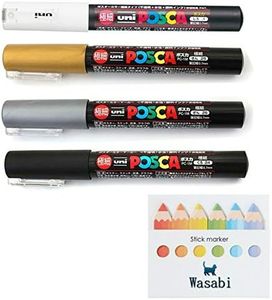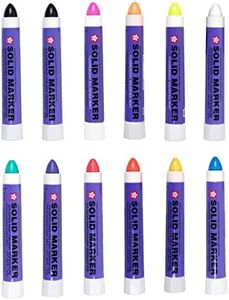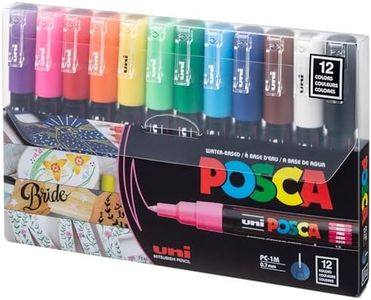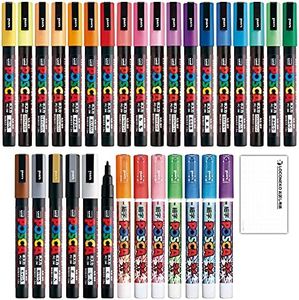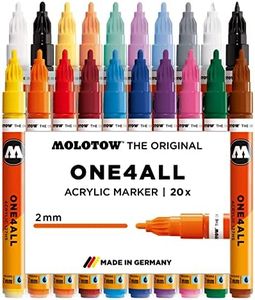We Use CookiesWe use cookies to enhance the security, performance,
functionality and for analytical and promotional activities. By continuing to browse this site you
are agreeing to our privacy policy
10 Best Paint Markers
From leading brands and best sellers available on the web.Buying Guide for the Best Paint Markers
Choosing the right paint markers can really enhance your art, craft, or labeling projects by allowing you to achieve vivid, lasting results on a variety of surfaces. The key is to consider what you'll be using the markers for, such as the type of surface, the level of detail, and the permanence you need. Before buying, think about whether you need bold coverage for large areas, fine tips for detail work, or specific qualities like being waterproof. Testing a few markers on your chosen surface, if possible, will help you find the best fit for your needs.Ink TypeThe ink type determines how your paint marker will behave on different surfaces and how long your marks will last. There are usually water-based and oil-based markers. Water-based ink is great for paper, glass, and some plastics, and it's easy to clean up, making it good for temporary markings and indoor projects. Oil-based ink is more permanent and works well on metal, rock, ceramics, and outdoor surfaces, as it resists water and fading. Your choice should depend on whether your work needs to last a long time or if you prefer easy cleanup.
Tip Size and ShapeTip size and shape affect how much detail you can achieve and how quickly you can cover surfaces. Common tip sizes are fine, medium, and broad; there are also chisel and bullet shapes. Fine tips are best for detailed drawings, lettering, or outlining, while broad and chisel tips are better for coloring larger areas and making bold lines. Choose a fine tip for crafts that require precision or a broad tip if you need to fill spaces or make clear, visible marks.
Opacity and CoverageOpacity tells you how well the paint will cover the surface beneath it, which is important if you're marking on dark materials or want vibrant, solid colors. Paint markers can range from transparent to highly opaque. Highly opaque markers are best if you want your colors to stand out on any background. If you’re working on light surfaces or layering colors, a less opaque marker might be suitable.
Color RangeThe color range refers to how many and what shades are available in a particular marker line. If your project requires specific colors or extensive blending, look for a set with a wide variety. Some users only need basic colors for labeling or simple art, while others may want as many options as possible for creative expression. Choose according to whether you’re doing simple tasks or complex artwork.
Drying Time and PermanenceDrying time impacts how fast you can work and whether the paint might smudge. Markers with quick-drying ink are ideal for fast, layered projects or for use on surfaces you’ll handle soon after drawing. Permanence matters if you need your marks to stay put, especially outdoors or on items that will be handled a lot. If you want marks that can be removed or changed, look for markers designed to be erasable or with less permanent ink.
Surface CompatibilityNot all paint markers work on every surface, so it’s important to check which ones are supported—common surfaces include metal, glass, wood, stone, plastic, and fabric. Some markers are designed for universal use, while others are better on specific materials. Think about what you'll be marking most and pick a marker that specifically mentions good performance on that surface.
